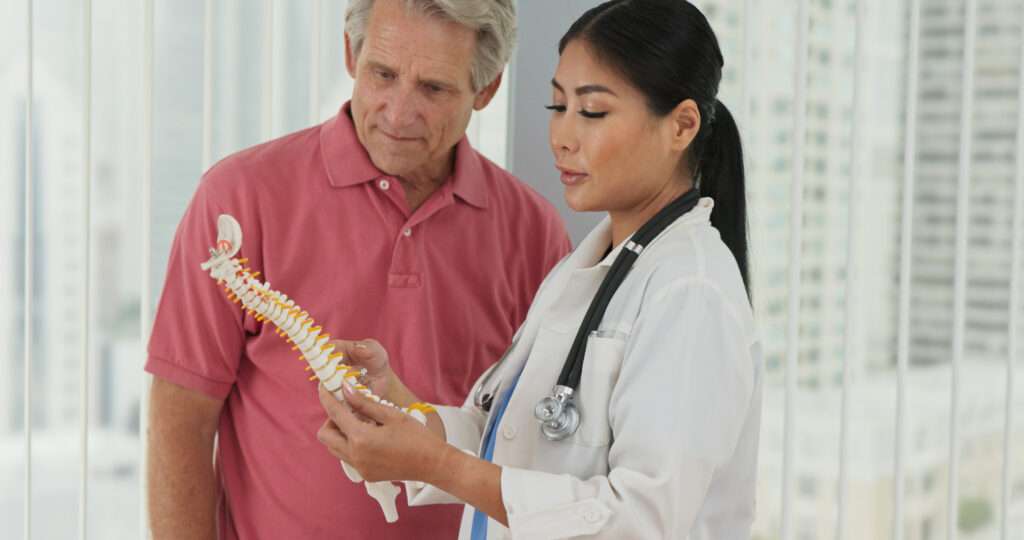Scoliosis is a condition characterized by an abnormal curvature of the spine. It can affect individuals of all ages but is most commonly diagnosed in children and adolescents. In this blog, we will explore the various aspects of spinal scoliosis, including its causes, treatment options, and the role of surgery.
What Are the Main Causes of Spinal Scoliosis? Can It Be Genetic?
Spinal Scoliosis can be caused by several factors, and in many cases, the exact cause is unknown. Here are some of the main causes:
- Idiopathic Scoliosis: This is the most common type, and its cause is unknown. It often occurs in children and adolescents during growth spurts.
- Congenital Scoliosis: This type is present at birth and results from malformations in the spine that develop during fetal growth.
- Neuromuscular Scoliosis: Caused by conditions that affect the nervous system, such as cerebral palsy or spinal cord injury, leading to muscle imbalance and spinal curvature.
- Degenerative Scoliosis: Often occurs in adults due to the degeneration of the spinal discs and joints.
Scoliosis can indeed have a genetic component. Studies have shown that it can run in families, indicating a potential genetic predisposition.
How Can Surgery Treat Scoliosis?
Surgery is often considered for severe cases of scoliosis, especially when the spinal curvature is greater than 40 degrees and continues to worsen. The primary goal of scoliosis surgery is to correct the spinal curvature and stabilize the spine.

Types of Scoliosis Surgery:
- Spinal Fusion: The most common surgical procedure for scoliosis. It involves fusing two or more vertebrae together using bone grafts, metal rods, and screws to straighten and stabilize the spine.
- Vertebral Body Tethering: A newer, less invasive procedure that uses a flexible cord to straighten the spine while allowing growth.
Is There a Surgery-Free Way to Fix Spinal Scoliosis?
Yes, there are non-surgical treatment options available for scoliosis, particularly for mild to moderate cases. These include:
- Bracing: Often used for children and adolescents whose bones are still growing. Braces help prevent further curvature of the spine.
- Physical Therapy: Exercises aimed at strengthening the muscles around the spine, improving posture, and increasing flexibility.
What Is the Cure to Scoliosis?
Currently, there is no definitive cure for scoliosis. However, several treatments can manage and reduce the symptoms, including both surgical and non-surgical options. Early detection and treatment are crucial to preventing the condition from worsening.
Can Scoliosis Be Fixed Without Surgery or Injections?
Yes, scoliosis can be managed without surgery or injections, especially in mild cases. Non-surgical treatments include:
- Bracing: Effective in preventing further curvature in growing children.
- Physical Therapy: Customized exercises to strengthen spinal muscles and improve posture.
- Chiropractic Care: Adjustments and manipulations to improve spinal alignment.
- Alternative Therapies: Yoga and Pilates can help improve flexibility and strength.
Can Mild Adult Onset Scoliosis Be Corrected Without Surgery?
Mild adult-onset scoliosis can often be managed without surgery through various non-invasive treatments, including:
- Physical Therapy: Tailored exercises to strengthen the back muscles and improve spinal alignment.
- Pain Management: Medications and injections to relieve pain and inflammation.
- Lifestyle Modifications: Maintaining a healthy weight, practicing good posture, and staying active.
Can Exercise Cure Scoliosis?
Exercise alone cannot cure scoliosis, but it can play a significant role in managing the condition. Specific exercises can:

- Strengthen Muscles: Target the muscles around the spine to provide better support.
- Improve Flexibility: Enhance the range of motion and reduce stiffness.
- Promote Better Posture: Help in maintaining a more aligned spine.
Can Scoliosis Correct Itself?
In some cases, particularly in infants with mild congenital scoliosis, the condition may improve on its own as the child grows. However, for most individuals, scoliosis does not correct itself and requires treatment to manage the symptoms and prevent progression.
Summary of Treatment Options
| Treatment Option | Description | Suitable For |
| Bracing | Orthotic devices to prevent further curvature in growing children. | Children and Adolescents |
| Physical Therapy | Exercises to strengthen muscles and improve posture. | All Ages |
| Chiropractic Care | Spinal adjustments and manipulations. | Mild to Moderate Scoliosis |
| Surgery (Spinal Fusion) | Fusing vertebrae together to correct and stabilize the spine. | Severe Scoliosis |
| Vertebral Body Tethering | Using a flexible cord to straighten the spine while allowing growth. | Children and Adolescents |
| Alternative Therapies | Yoga and Pilates to enhance flexibility and strength. | Mild to Moderate Scoliosis |
Conclusion
Scoliosis is a complex condition with various causes and treatment options. While there is no definitive cure, early detection and appropriate treatment can significantly improve the quality of life for individuals with scoliosis. Whether through non-surgical methods like bracing and physical therapy or surgical interventions, managing scoliosis effectively requires a comprehensive approach tailored to the individual’s needs.
By understanding the available treatment options and working closely with healthcare professionals, individuals with scoliosis can lead healthy and active lives.
Feel free to reach out with any questions or concerns about scoliosis and its treatment options. We are here to help you navigate through this journey.

